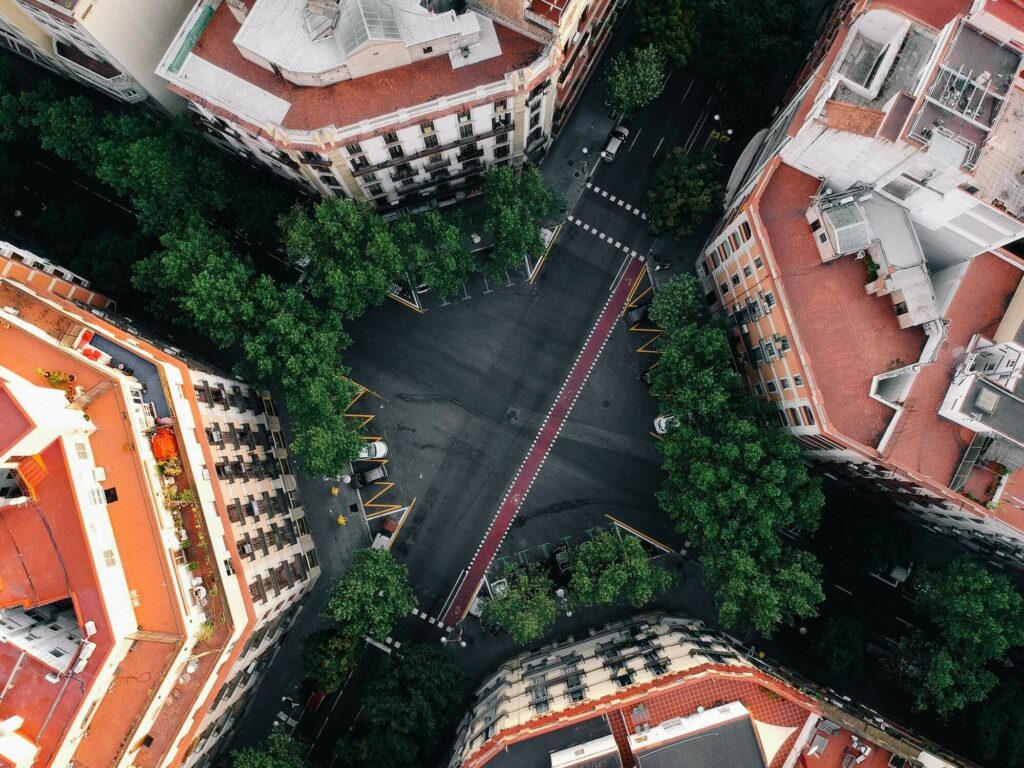According to the UN, 70% of the world’s population will live in urban areas by 2050. However, urban planning policies were neglected in the 90s and handed over to profit-driven developers. Spatial planning is an essential tool for meeting this densification challenge. What can we do to develop our cities on a human scale? What are the visions for improving quality of life in urban areas? What are the solutions for (re)creating social links in the city? Singerbird attempts to answer these questions.
Dense urban centers
Our cities are faced with a major challenge: a growing population. The limits of an under-densified city are many.
Atlanta is a city that has seen its surface area multiply over the years. Suburban farmland is being converted to subdivisions and single-family homes. As distances are greater in Atlanta, residents mainly travel by car to get to work or to run errands. A great deal of traffic is generated. Conversely, Barcelona – home to the same number of inhabitants as Atlanta, i.e. 5,000,000 – has densified over an area 3 times smaller than Atlanta. What’s the difference? Atlanta’s energy consumption is 10 times greater than Barcelona’s.
Cities therefore have no choice but to densify their landscape to improve the quality of life of their inhabitants. A dense city means proximity to many services and more sustainable traffic. Finally, the contrast between dense planning and common spaces such as parks is a good alternative to suburbs. Amsterdam and Copenhagen are excellent examples!
A mix of uses
Our cities are the protagonists of our social lives. They house very different groups of people. The denser the cities, the more urban life is established. However, urban fragmentation is becoming increasingly noticeable. There are disparities in access to housing, education, services and culture. The challenge for urban and regional planning today is to counter a trend towards segregation in public space. To achieve this, it seems essential to mix uses and housing types.
Low-rise architecture
The landscapes of cities like Hong Kong are punctuated by skyscrapers. These respond to densification but are isolated from their surroundings. The space between each building does not allow for quality common spaces conducive to interaction. The height of skyscrapers also poses a problem. It hinders the circulation of natural light.
Consequently, the construction of 5- to 6-storey “block” buildings with entrances directly on the street makes for a more animated communal life and stimulates spontaneous encounters. Barcelona is once again a good example. Gaudi’s city is curiously as dense as Hong Kong, but the low height of its buildings makes it a more pleasant place to live.
For Singerbird, a city on a human scale favors soft mobility through proximity and diversity of uses, while at the same time coping with its densification.

